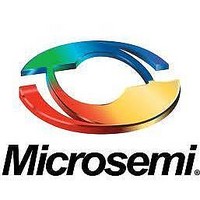LX1562IDM Microsemi Analog Mixed Signal Group, LX1562IDM Datasheet - Page 17

LX1562IDM
Manufacturer Part Number
LX1562IDM
Description
IC CONTROLLER PFC 13.1V 8SOIC
Manufacturer
Microsemi Analog Mixed Signal Group
Datasheet
1.LX1562IM.pdf
(25 pages)
Specifications of LX1562IDM
Mode
Discontinuous Conduction (DCM)
Frequency - Switching
1.7MHz
Current - Startup
200µA
Voltage - Supply
11 V ~ 25 V
Operating Temperature
0°C ~ 100°C
Mounting Type
Surface Mount
Package / Case
8-SOIC
Lead Free Status / RoHS Status
Lead free / RoHS Compliant
Copyright © 1996
Rev. 1.3a
TYPICAL APPLICATION
The application circuit shown in Figure 31 uses the LX1562 as the
controller to implement a boost type power factor regulator. The
I.C. controls the regulator, such that the inductor current is always
operating in a discontinuous conduction mode with no current
gaps. This mode of operation has several advantages over the
fixed frequency discontinuous conduction mode: 1) The switch-
ing frequency adjusts itself to the AC line envelope, causing a
sinusoidal current draw, 2) Since there is no current gap between
the switching cycles, the inductor voltage does not oscillate,
causing less radiated noise, 3) The lower peak inductor current
causes less power dissipation in the power MOSFET.
OUTPUT VOLTAGE REQUIREMENT
Since the converter is a boost type topology, it requires the output
voltage to always be higher than the input voltage.
recommended to select this voltage at least 15% higher than the
maximum input voltage in order to: A) Avoid the inductor
saturation during line transience, and B) To keep the operating
frequency above the audible range at high line.
selected near the maximum AC line, the increase in off-time could
reduce the operating frequency below the audible frequency and
cause inductor humming. In fact, Figure 32 (next page) shows
Figure 32 (next page) shows that when boost voltage is
8/30
AC+
AC-
120V
AC
D2
D1
Note: Thick trace on schematic shows high-frequency, high-current path in circuit.
FIGURE 31 — TYPICAL APPLICATION OF THE LX1562 IN AN 80W FLUORESCENT LAMP
D3
D4
C1
Lead lengths must be minimized to avoid high-frequency noise problems.
P R O D U C T D A T A B O O K 1 9 9 6 / 1 9 9 7
S
1µF
250V
E C O N D
R1
R2
100k
½W
P
2.2M
1%
29k
1%
A P P L I C AT I O N I N F O R M A T I O N
-G
R O D U C T I O N
R3
BALLAST WITH ACTIVE POWER FACTOR CONTROL
61T #22AWG
L1
E N E R AT I O N
.01µF
450µH
C4
D5
7T
R10
4.7M
22µF
C2
1N4935
C3
22k
R4
It is
P
3
O W E R
MULT
IN
V
IN
D
8
and are used throughout the design procedure. An example with
the following specifications for the boost converter is given as:
followed by a step by step design procedure which walks through
component selection.
GND
that for ±13% (100V to 130V) change in the line voltage the
optimum range of the operating frequency is when off-time duty
cycle (D') is between 0.57 and 0.75. This means that the boost
voltage needs to be 245V when selecting D' = 0.75 at maximum
AC line.
voltage rating of the back end DC to AC fluorescent lamp inverter.
This sets the boost voltage at:
A T A
F
6
In this example, D' is chosen to be 0.8, to slightly reduce the
A set of formulas have been derived specifically for this mode,
Input Voltage Range
Output Power
Efficiency
Power Factor
Total Harmonic Distortion
A C T O R
I
COMP
DET
OUT
5
INV
C.S.
V
O
=
S
4
7
2
1
1N4148
C
H E E T
130 * 2
47
R9 620k
D6
R5
O N T R O L L E R
0.1µF
0.8
1/4W
C5
3x
= 230V
1RF730
R6
1.3
MR854
1M
11k
D7
1%
1%
R7
R8
-
-
-
-
-
V
230V
LX1562/1563
BOOST
100 to 130V RMS
80W
95% at full load
> 0.99 at full load
< 10% at full load
100µF
400V
C6
17






















